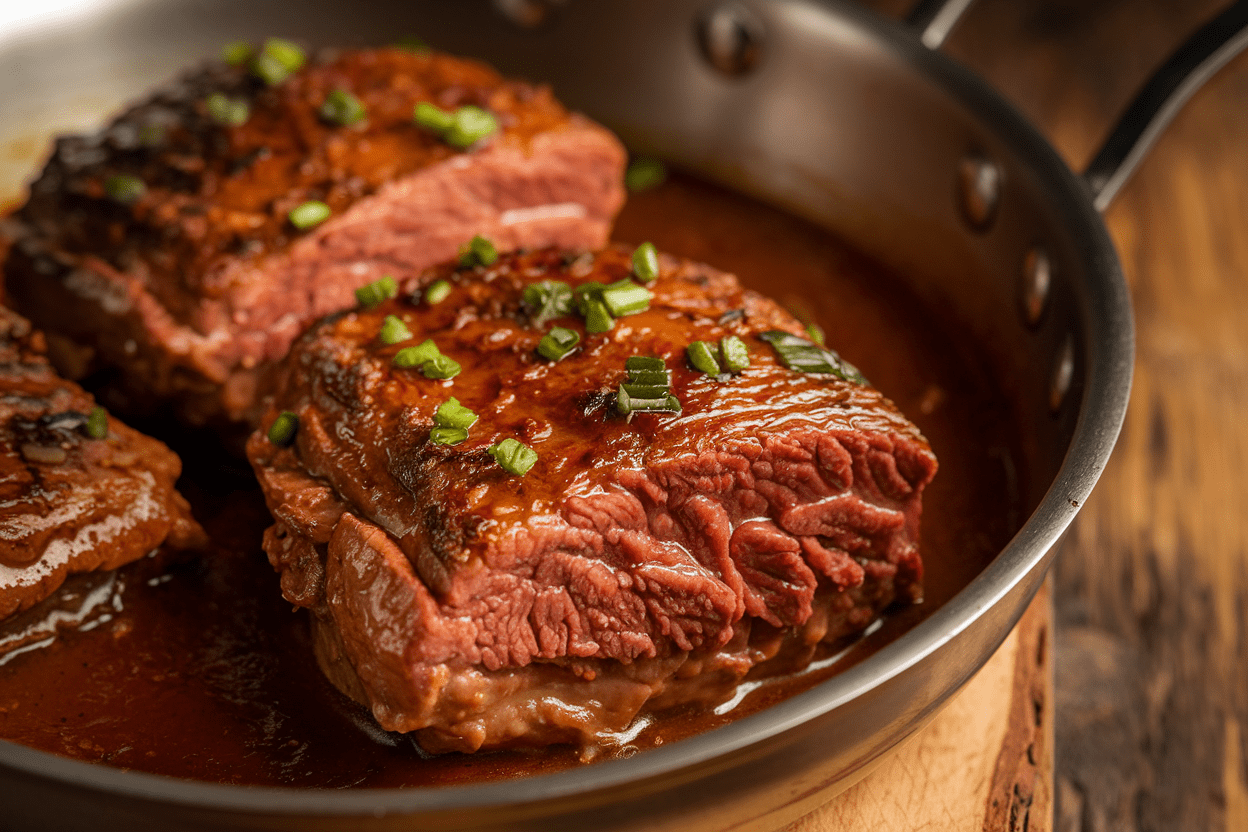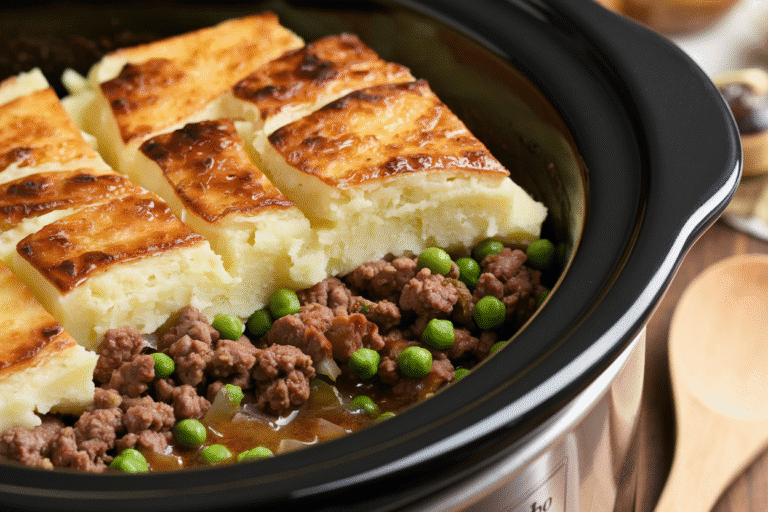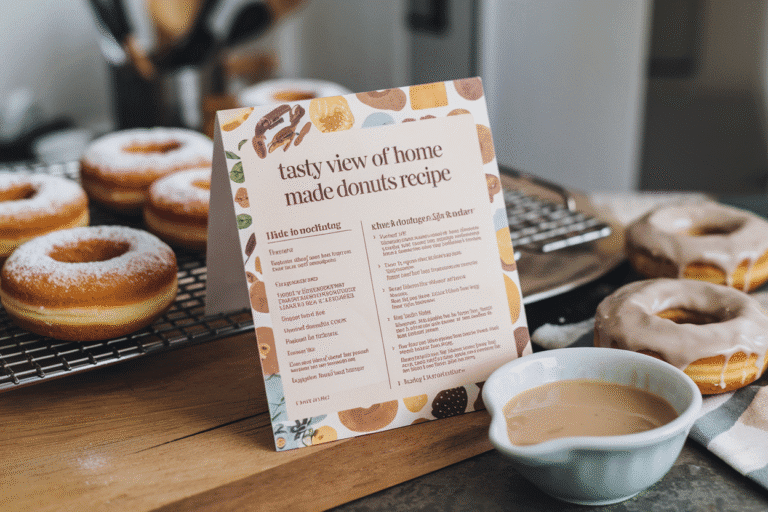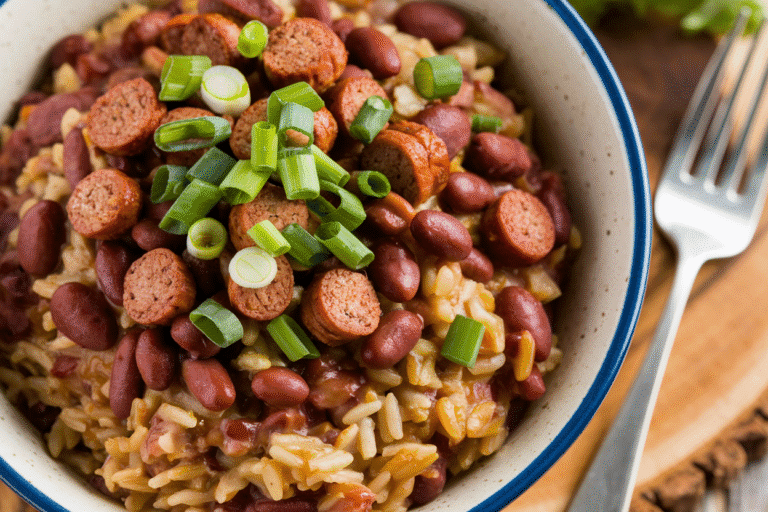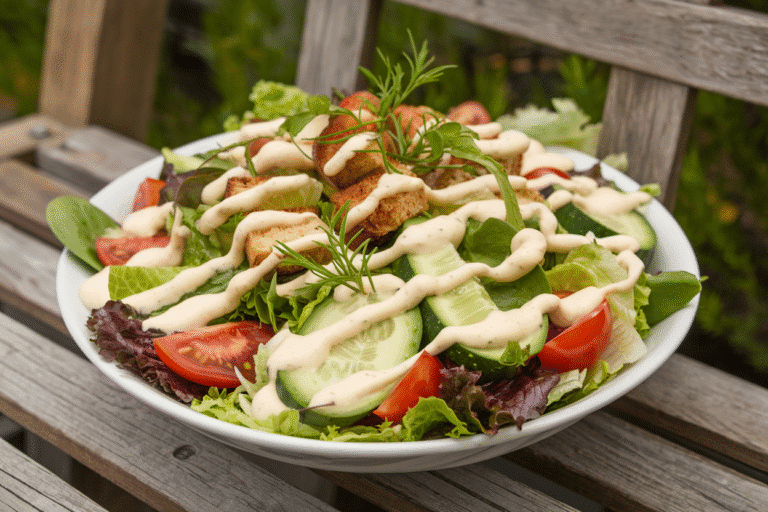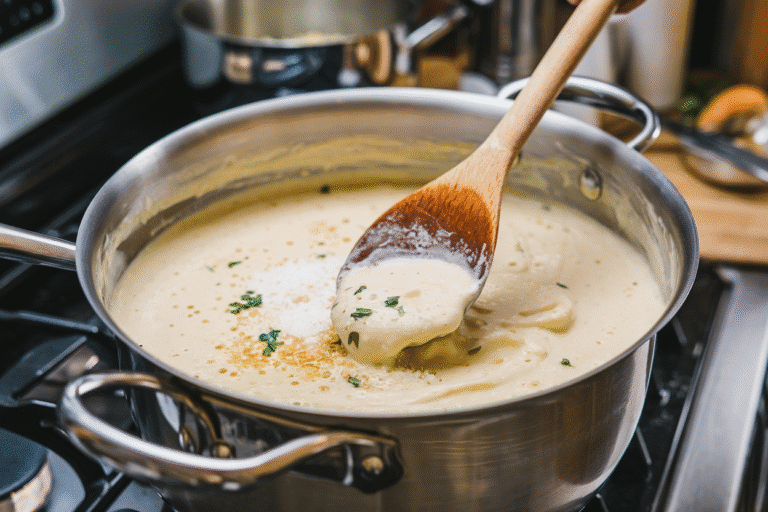Carne Guisada Recipe Mexican: The Slow-Simmered Beef Stew That Crushes Takeout and Breaks the Internet
You can smell success before you taste it. That deep, savory perfume of seared beef, roasted chiles, and toasted spices? It’s the kind of aroma that makes neighbors “just happen to stop by.” This carne guisada recipe Mexican style is rich, saucy, and unapologetically bold—like a big warm hug that can throw a punch.
It’s not fancy. It’s not complicated. It’s just the kind of food that makes people say, “Wait, you made this?”
What Makes This Recipe Awesome
Carne guisada is a slow-simmered Mexican beef stew with a silky gravy that clings to tortillas and rice like it was born to be there.
The secret is a proper sear and a low-and-slow braise that transforms tough beef into tender, spoon-ready bites. A chili-forward base brings warmth without blowing your face off. It’s weekday-simple, weekend-worthy, and wildly versatile—tacos, bowls, burritos, even breakfast with eggs.
And yes, leftovers taste better tomorrow. Science.
Ingredients Breakdown
- Beef chuck roast (2–2.5 lbs), cut into 1-inch cubes: Marbled and ideal for slow cooking; chuck = flavor + tenderness.
- Kosher salt and black pepper: Season aggressively; the stew can take it.
- Neutral oil (2–3 tbsp): For high-heat searing—canola, avocado, or grapeseed.
- White or yellow onion (1 large), diced: Sweetness and body for the gravy.
- Poblano pepper (1), diced: Mild heat and earthiness. Optional but recommended.
- Jalapeño (1), minced: For a gentle kick.
Remove seeds for mild.
- Garlic (4–6 cloves), minced: Non-negotiable.
- Tomato paste (2 tbsp): Concentrated umami and color.
- Crushed tomatoes (1 cup) or roma tomatoes (2), chopped: Adds brightness to the gravy.
- Beef broth (2–2.5 cups): The braising liquid. Use low-sodium for control.
- All-purpose flour (2 tbsp): Lightly thickens the sauce without turning it gloopy.
- Ground cumin (2 tsp): The signature warm spice note.
- Mexican oregano (1 tsp), crushed: Citrus-herbal pop. Regular oregano works in a pinch.
- Ground coriander (1 tsp): Subtle brightness that plays well with cumin.
- Smoked paprika (1 tsp): Gentle smoke; if using chipotles elsewhere, you can reduce this.
- Bay leaves (2): Background complexity.
- Optional heat boosters: 1–2 chipotles in adobo, minced, or 1 tsp ancho chili powder.
- Fresh cilantro (small bunch), chopped: For finishing.
Adds lift.
- Lime (1), cut into wedges: Acid balances the richness.
- For serving: Warm flour tortillas, rice, refried beans, or crispy potatoes.
The Method – Instructions
- Pat and season the beef: Dry the cubes thoroughly with paper towels, then season all sides with salt and pepper. Moisture is the enemy of browning.
- Get the pan ripping hot: Heat oil in a heavy pot (Dutch oven or deep skillet) over medium-high until shimmering.
- Sear in batches: Add beef in a single layer; don’t crowd. Brown 2–3 minutes per side.
Remove to a bowl and repeat. Those browned bits on the bottom? Gold.
- Soften aromatics: Add onion, poblano, and jalapeño with a pinch of salt.
Cook 5–6 minutes, scraping up fond. Stir in garlic for 30 seconds until fragrant.
- Build the flavor base: Add tomato paste; cook 1–2 minutes to caramelize. Stir in cumin, oregano, coriander, and smoked paprika; toast 30 seconds.
- Thicken slightly: Sprinkle flour over the veggies; stir for 1 minute to cook out raw flavor.
- Deglaze: Pour in 1/2 cup beef broth, scraping up browned bits until smooth and glossy.
- Tomatoes + heat: Stir in crushed tomatoes (or chopped fresh), optional chipotle or ancho, and bay leaves.
- Return beef + braise: Add seared beef and juices back in.
Pour in enough broth to just cover. Bring to a simmer.
- Low and slow: Cover and simmer gently on low for 1.5–2 hours, stirring occasionally, until beef is fork-tender and sauce is velvety. Add splashes of broth if it thickens too much.
- Finish: Remove bay leaves.
Adjust salt and pepper. Stir in chopped cilantro and a squeeze of lime for brightness.
- Serve: Spoon into bowls with rice or tuck into warm flour tortillas. Garnish with more cilantro, lime wedges, and maybe a dollop of crema.
Yes, please.
Preservation Guide
- Fridge: Store in an airtight container up to 4 days. Flavor deepens by day two—plan for leftovers, thank yourself later.
- Freezer: Freeze in portions for up to 3 months. Cool completely before freezing to prevent ice crystals.
- Reheat: Thaw overnight in the fridge.
Warm gently on the stove with a splash of broth or water. Avoid microwaving on high; it can toughen the meat.
- Batch cooking tip: Double the recipe and freeze half without cilantro and lime. Add fresh when serving for that just-made pop.
Health Benefits
- Protein-packed: Beef chuck brings complete proteins for muscle repair and satiety.
Great post-workout or after a long day.
- Iron and B vitamins: Supports energy levels and oxygen transport. Handy if you’re feeling sluggish.
- Antioxidant boost: Tomatoes, peppers, garlic, and spices deliver vitamin C, lycopene, and polyphenols for cellular health. Your future self approves.
- Smart fats: Using a small amount of neutral oil and leaning on broth keeps the stew robust without being greasy.
- Customizable carbs: Serve with tortillas, rice, or veggies based on your goals—flexible for low-carb, gluten-free, or high-energy needs (FYI, corn tortillas are naturally GF).
What Not to Do
- Don’t skip the sear: Pale beef = bland stew.
Browning builds the foundation of flavor.
- Don’t boil the stew: A rolling boil makes tough meat. Keep it at a gentle simmer.
- Don’t over-thicken early: The sauce thickens as collagen melts. Add flour lightly and adjust at the end if needed.
- Don’t under-salt: Undersalted stew tastes flat.
Season in layers and taste before serving.
- Don’t crowd the pan: Steam kills browning. Sear in batches, even if it tests your patience. Character-building, IMO.
Alternatives
- Meat swaps: Try pork shoulder for a milder, sweeter version, or lamb for deeper richness.
Chicken thighs if you insist—reduce simmer time to 45–60 minutes.
- Spice variations: Replace smoked paprika with ancho for fruity depth, or add a cinnamon stick and clove for a mole-adjacent vibe.
- Veg-forward: Add mushrooms, carrots, or potatoes in the last 45 minutes for bulk and texture.
- Gluten-free: Swap flour for cornstarch: mix 1 tbsp cornstarch with 2 tbsp cold water and stir in at the end; simmer 2–3 minutes.
- Low-heat version: Skip jalapeño and chipotle; use only poblano and sweet paprika for flavor without fire.
- Pressure cooker: Sear on sauté, then cook at high pressure for 35 minutes; natural release 10 minutes. Finish with cilantro and lime.
- Slow cooker: Sear on the stove, transfer to slow cooker with liquids and spices, and cook 6–8 hours on low.
FAQ
What cut of beef is best for carne guisada?
Chuck roast is the sweet spot: enough fat and connective tissue to break down into a silky, tender texture. Round or sirloin can work but won’t be as luscious.
Can I make it spicy?
Yes.
Add minced chipotle in adobo, extra jalapeño, or a teaspoon of ancho or guajillo powder. Taste as you go; you’re the boss.
Why is my beef tough?
It either cooked too hot or not long enough. Keep a low simmer and give it time—collagen needs at least 90 minutes to convert into gelatin.
How do I thicken the sauce without flour?
Use a cornstarch slurry at the end, reduce uncovered for 10–15 minutes, or blend a small portion of the onions and tomatoes back into the pot.
What should I serve with carne guisada?
Warm flour tortillas, Mexican rice, refried beans, or crispy potatoes.
Add pickled red onions and a little crema for contrast. Lime is mandatory.
Can I prep this ahead?
Absolutely. Make it a day before, chill, and reheat gently.
The flavors meld and improve—like leftovers that planned their own glow-up.
Is this the same as Texas-style carne guisada?
They’re cousins. Mexican versions lean into chiles, tomatoes, and herbs; Texas takes may be thicker and more gravy-forward. Both are excellent; don’t start a fight.
How do I avoid an oily top?
Trim excess fat before cooking and skim surface fat during the simmer.
If making ahead, chill and lift off the solidified fat—easy win.
Can I use canned tomatoes?
Yes. Crushed or diced canned tomatoes are consistent and convenient. Choose a good-quality brand for best flavor.
What if I don’t have poblano?
Use an extra jalapeño for heat or a small green bell pepper for mild, vegetal sweetness.
It’ll still be great.
The Bottom Line
This carne guisada recipe Mexican style is the blueprint for big, comforting flavor with minimal fuss. Sear hard, simmer gently, finish bright—that’s the game. Whether you’re feeding a crowd or hoarding leftovers like a dragon, this stew delivers.
One pot, low stress, maximum payoff. Ready to make your kitchen smell dangerously good?
